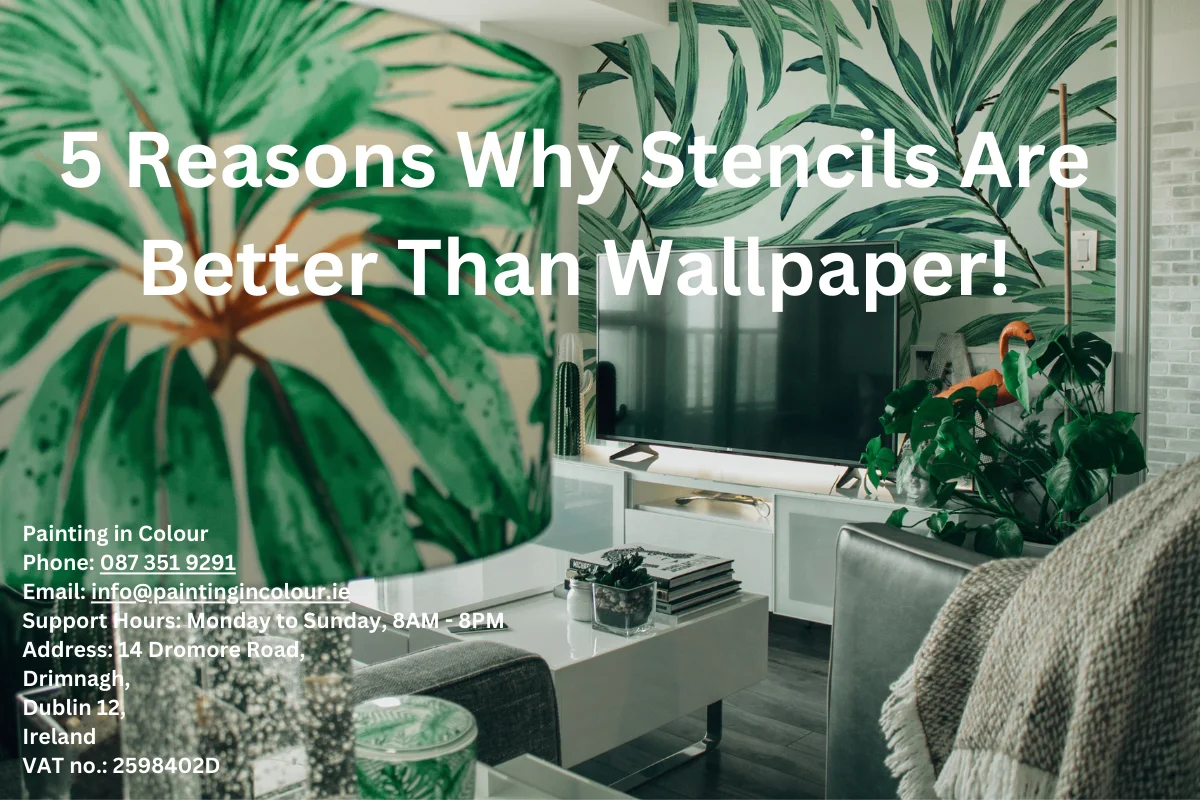Table of Contents
Faux painting techniques have been used for centuries to create the illusion of different materials and textures on walls, ceilings, and furniture. From the marbled walls of ancient Rome to the wood grain imitations of the 18th century, faux painting has always been a popular decorative art form. In Dublin, faux painting is a great way to add depth, interest, and personality to any interior or exterior space. In this article, we will explore some of the most popular faux painting techniques and their uses in Dublin.
What is faux painting?
Faux painting is a decorative painting technique that creates the illusion of texture or material on a surface. It is also known as decorative painting, faux finishing, or faux painting. Faux painting can imitate a wide range of materials, such as wood, stone, metal, marble, and more.
Popular faux painting techniques in Dublin
- Venetian plaster – Venetian plaster is a faux painting technique that creates the look of polished marble or stone. It involves layering multiple thin coats of plaster over a base coat, and then polishing the surface to create a smooth, shiny finish.
- Wood graining – Wood graining is a technique that imitates the look of wood grain on a surface. It can be used on doors, cabinets, furniture, and walls. Wood graining involves using a special tool to create the appearance of wood grain on a surface, and then staining or painting the surface to create the desired effect.
- Rag rolling – Rag rolling is a technique that creates a textured finish on a surface. It involves rolling a rag or other textured material over a base coat of paint, creating a unique pattern and texture.
- Strie – Strie is a technique that creates vertical or horizontal stripes on a surface. It involves using a brush or other tool to create the appearance of long, thin lines on a surface.
Uses of faux painting techniques in Dublin
Faux painting techniques can be used in a variety of ways in Dublin. They can be used to:
- Add texture and interest to walls, ceilings, and furniture
- Create a luxurious and elegant look
- Mimic the appearance of expensive materials, such as marble or wood
- Add character and personality to a space
- Highlight architectural features, such as columns or moldings
Pros and cons of faux painting techniques
Pros:
- Faux painting techniques can add value and interest to a home or commercial property
- They are a cost-effective way to create the look of expensive materials
- Faux painting techniques can be customized to suit any style or taste
- They can hide imperfections or flaws in a surface
Cons:
- Faux painting techniques require skill and experience to execute properly
- They can be time-consuming and messy
- The final result may not be exactly what was envisioned
FAQs about faux painting
Can faux painting techniques be used outdoors?
Yes, faux painting techniques can be used on exterior surfaces, such as walls, columns, and trim.
Can faux painting be done on textured surfaces?
Yes, faux painting techniques can be used on textured surfaces, but the texture may affect the final result.
How long does faux painting take?
The time required for faux painting will depend on the technique used, the size of the space, and the skill of the painter.
Conclusion
Faux painting techniques offer a wide range of possibilities for creating unique and interesting surfaces in Dublin. Whether you want to create the look of marble

Robert Martinak is a Painting Technology Specialist with over 30 years of experience in the field. He is based in Dublin, Ireland and has extensive knowledge and expertise in the application and management of painting projects.












